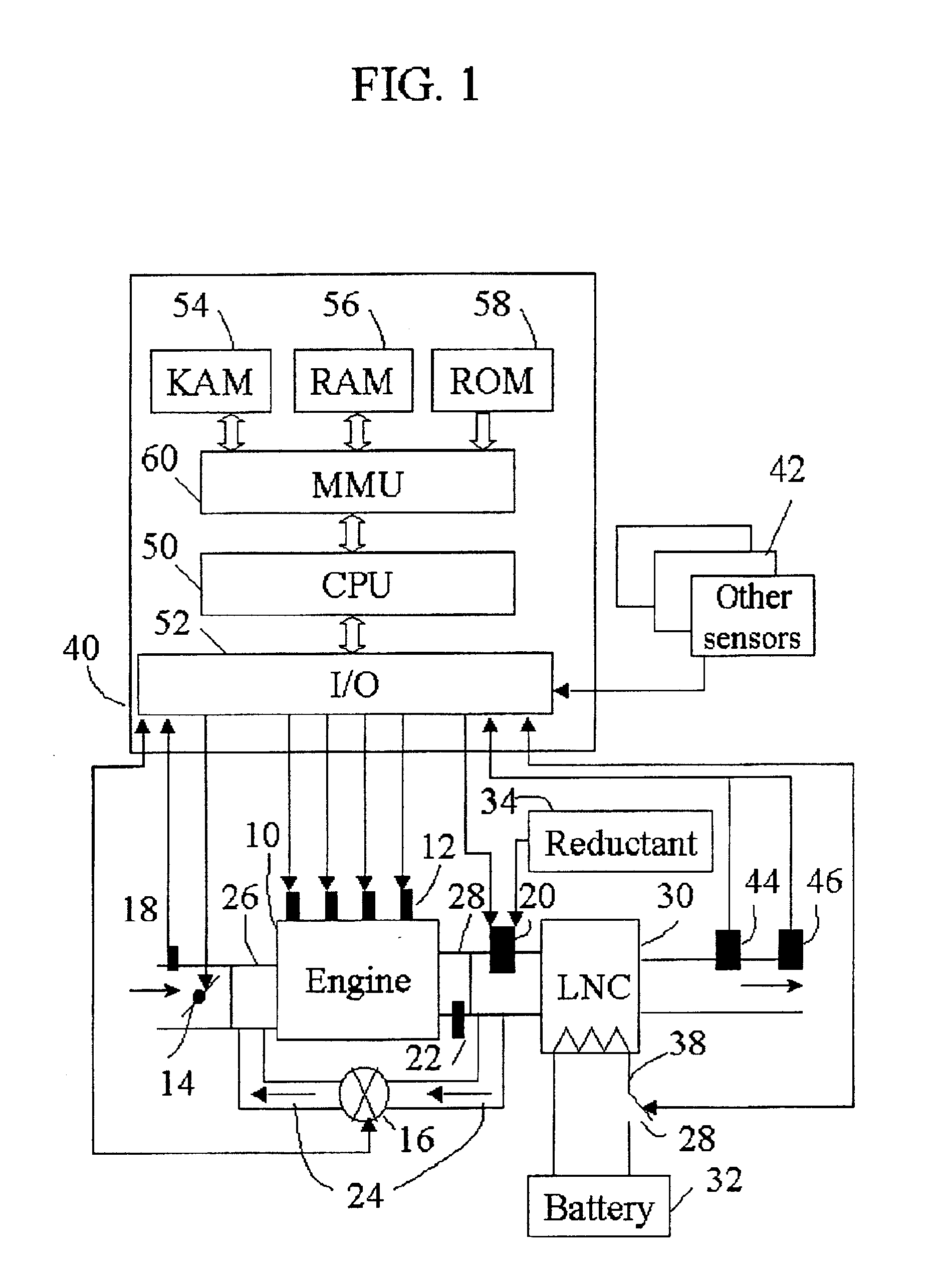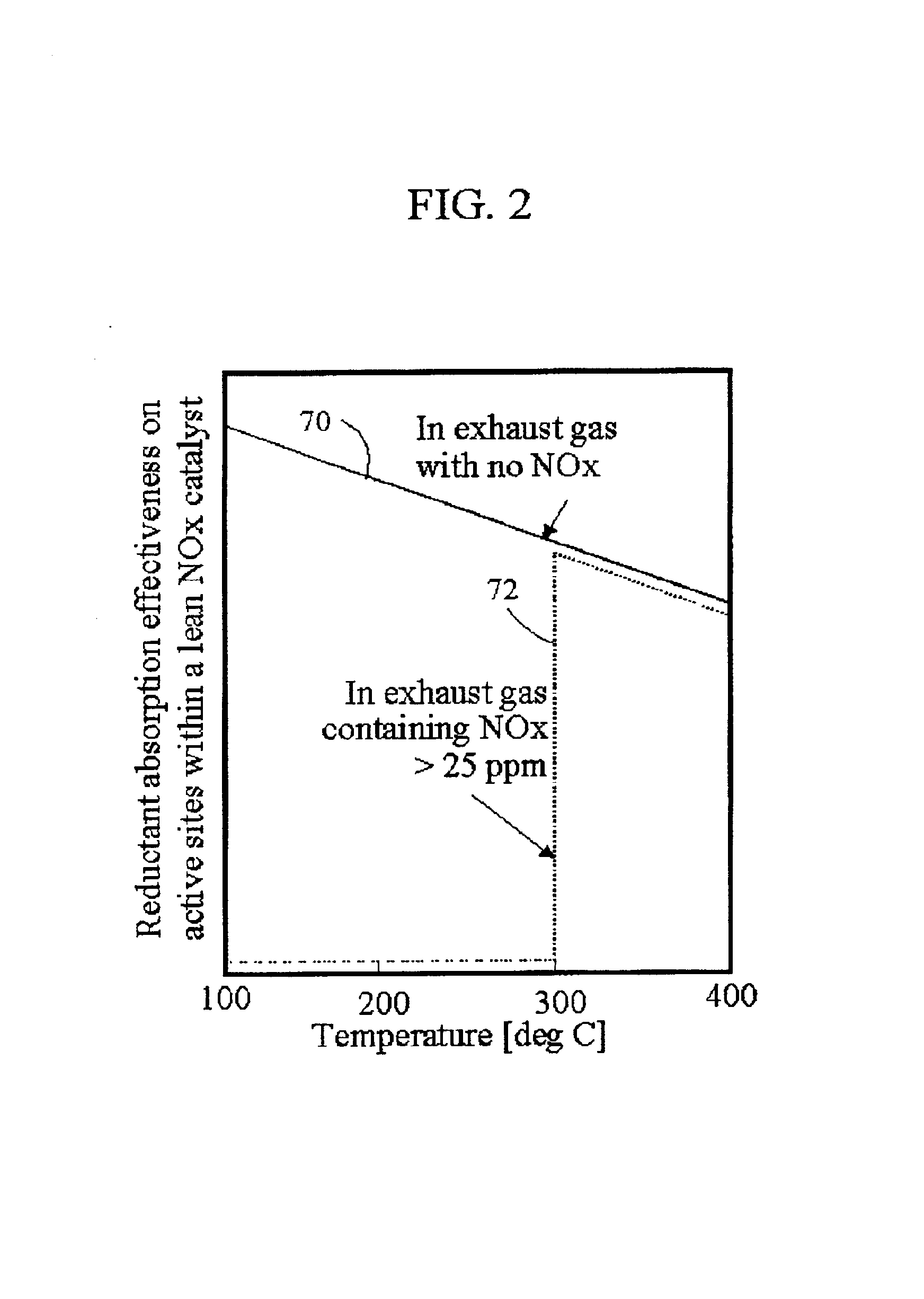High efficiency conversion of nitrogen oxides in an exhaust aftertreatment device at low temperature
a nitrogen oxide and aftertreatment device technology, applied in the direction of machines/engines, electric control, instruments, etc., can solve the problems of nox conversion being too low and the reducer supplied to the catalyst slips, and achieve the effect of less reductant, less reductant, and high conversion efficiency
- Summary
- Abstract
- Description
- Claims
- Application Information
AI Technical Summary
Benefits of technology
Problems solved by technology
Method used
Image
Examples
Embodiment Construction
[0018]In FIG. 1, an internal combustion engine 10 is supplied air through an intake line in which a throttle valve 14 may be disposed. Position of throttle valve 14 may be controlled by an electronic control unit (ECU) 40. A mass airflow sensor 18 may be placed in the intake line, supplying a signal to ECU 40 indicative of intake airflow into engine 10. Alternatively, a speed density system may be used to infer intake airflow. Speed density relies on a sensor in the intake system providing an indication of pressure in the intake manifold and an engine speed sensor, shown as other sensors 42. Engine 10 is supplied fuel by injectors 12 (fuel supply to injectors 12 not shown). Fuel injection timing and duration may be controlled by mechanical means. More commonly, however, the fuel injection system is of a type, eg., common rail design, which allows timing and duration to be controlled by ECU 40. Engine 10 may be equipped with an exhaust gas recirculation (EGR) system, which connects e...
PUM
 Login to View More
Login to View More Abstract
Description
Claims
Application Information
 Login to View More
Login to View More - R&D
- Intellectual Property
- Life Sciences
- Materials
- Tech Scout
- Unparalleled Data Quality
- Higher Quality Content
- 60% Fewer Hallucinations
Browse by: Latest US Patents, China's latest patents, Technical Efficacy Thesaurus, Application Domain, Technology Topic, Popular Technical Reports.
© 2025 PatSnap. All rights reserved.Legal|Privacy policy|Modern Slavery Act Transparency Statement|Sitemap|About US| Contact US: help@patsnap.com



